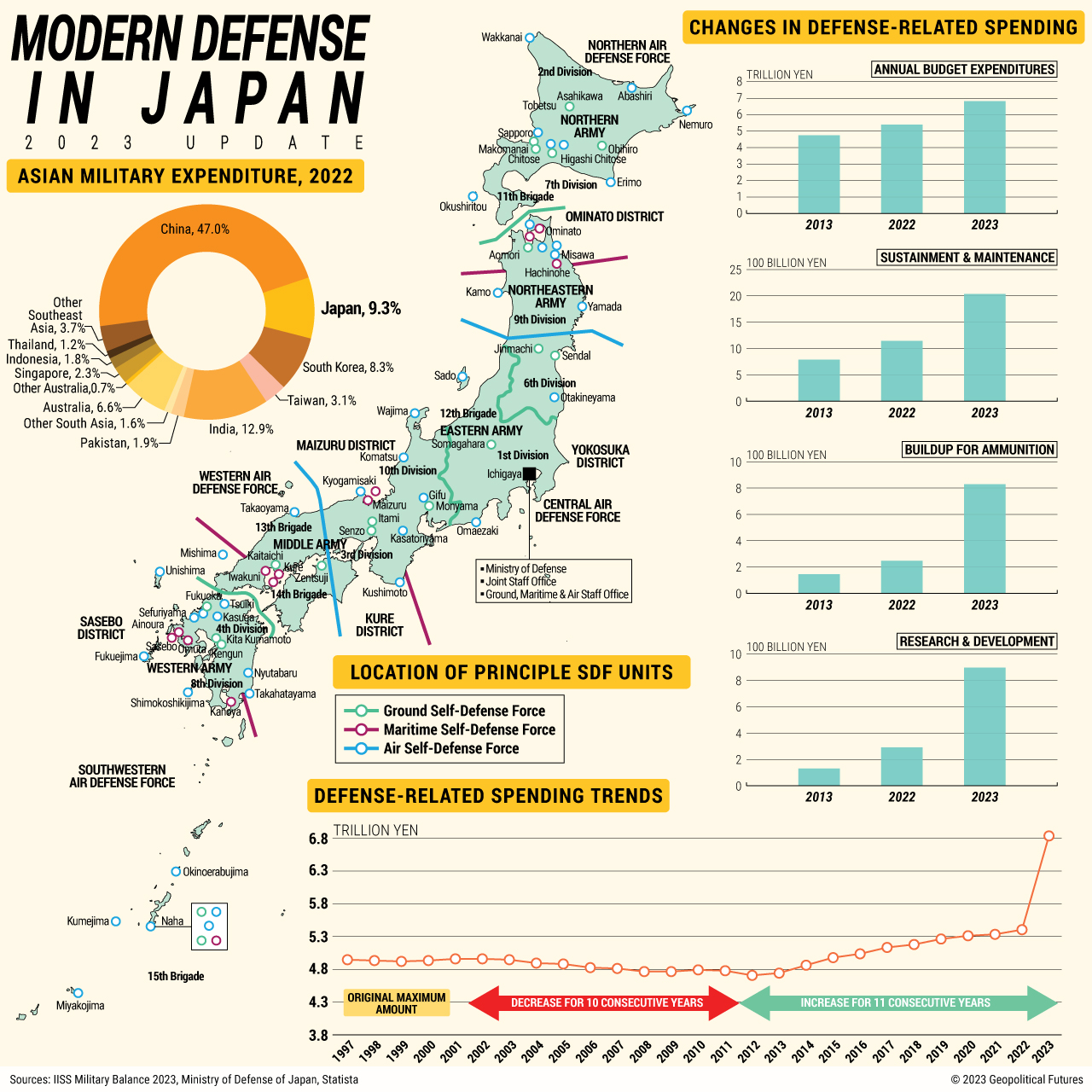- Luật
- Hỏi đáp
- Văn bản pháp luật
- Luật Giao Thông Đường Bộ
- Luật Hôn Nhân gia đình
- Luật Hành Chính,khiếu nại tố cáo
- Luật xây dựng
- Luật đất đai,bất động sản
- Luật lao động
- Luật kinh doanh đầu tư
- Luật thương mại
- Luật thuế
- Luật thi hành án
- Luật tố tụng dân sự
- Luật dân sự
- Luật thừa kế
- Luật hình sự
- Văn bản toà án Nghị quyết,án lệ
- Luật chứng khoán
- Video
- NGHIÊN CỨU PHÁP LUẬT
- ĐẦU TƯ CHỨNG KHOÁN
- BIẾN ĐỔI KHÍ HẬU
- Bình luận khoa học hình sự
- Dịch vụ pháp lý
- Tin tức và sự kiện
- Thư giãn

TIN TỨC
fanpage
Thống kê truy cập
- Online: 223
- Hôm nay: 198
- Tháng: 1621
- Tổng truy cập: 5245625
Tracking Japan is Defense Modernization
The country's defense spending in 2023 rose by the most in at least 70 years.

Since 2017, Japan’s spending on defense has been rising faster than its gross domestic product. The 2023 budget for the armed forces, known as the Japan Self-Defense Forces, was 26 percent higher than the previous year’s sum – the largest nominal increase in the country’s military spending since at least 1952. It was the first since Tokyo unveiled its new National Security Strategy, which includes a target to bring military spending up to 2 percent of GDP by 2027. The introduction of this new target is a significant shift from Japan’s postwar defense policy, which capped military spending at 1 percent of GDP and significantly restricted the JSDF’s capabilities.
The main reason for this fundamental change is the worsening security environment in the Indo-Pacific region, specifically China’s assertive activities and the nuclear threat North Korea poses. Russia’s increased aggressiveness is also unsettling Japanese officials. To prepare for these growing threats, Tokyo plans to acquire new counterstrike capabilities, update the JSDF’s maritime and air systems, and improve self-reliance by encouraging the Japanese arms industry to expand its domestic manufacturing and maintenance capacity. Currently, Japan is capable of producing all of its planned military ships and almost 90 percent of its planned land systems, but it relies on the United States for many aircraft and missiles.
Các bài viết khác
- CÁC CHUYÊN GIA DỰ ĐOÁN NỀN KINH TẾ 2024 - 2026 (07.08.2023)
- Tiêu điều mặt bằng cho thuê tại TP. HCM (24.06.2023)
- Vài nét Dự báo thời đại phục hưng và khai sáng của loài người sau đại dịch Corona-2019.7-2021(khởi đầu từ tháng 9 năm giáp thìn 2024) (25.06.2021)
- Từ sự kiện Tổng biên tập báo TIME Greta Thunberg là Nhân vật của năm 2019 đến báo cáo Biến đổi khí hậu Phúc trình của IPCC báo động đỏ cho nhân loại 82021 (15.01.2020)
- Chuyên gia UNDP Jonathan Pincus: các quốc gia đang phát triển chịu thiệt thòi trong lộ trình Net Zero (21.08.2023)


















































 Yahoo:
Yahoo: 